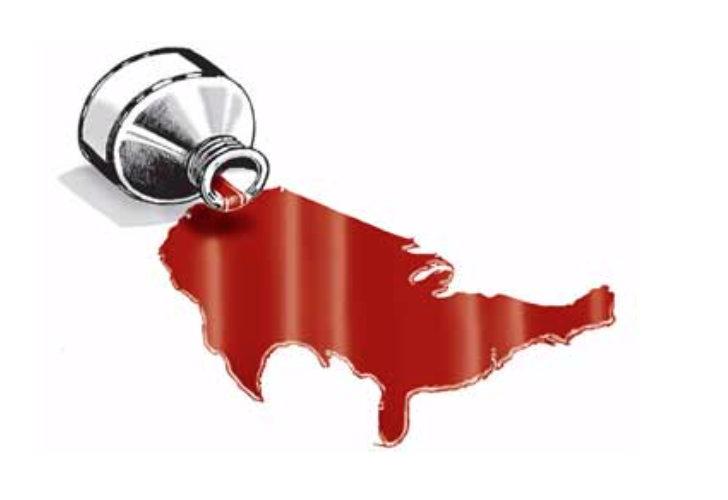
The headline on this Inside Higher Education piece seemed prophetic: “What Led Concordia Portland to Close?”
The date, however, was the Feb. 14, 2020. In other words, this story broke just ahead of the national wave of headlines about colleges and universities struggling to deal with scary economic realities linked to the coronavirus crisis.
This story was linked to the OTHER life-and-death crisis facing higher education — especially private schools and, to be even more specific, faith-based private schools. I’m talking about the demographic cliff that looms just down the road when the massive millennial generation has moved past its college years.
The Concordia Portland story had it all. Administrators had tried to grow their way out of the crisis, adding on degree programs and remote campuses that were not linked to their original mission. There was a strange deal with a third-party recruiting agency. Finally, there were theological tensions with the school’s doctrinally conservative denomination — the Lutheran Church-Missouri Synod. This chunk of the story begins during an era when enrollments were headed up:
By all accounts, Concordia was massively successful. … Total enrollment more than doubled from over 3,000 students in 2012 to more than 7,400 in 2014, according to federal data. Much of that growth was among graduate students, where enrollment spiked from about 1,700 students to more than 6,000. Enrollment of adults aged 25 to 64 went from about 1,100 in 2011 to 3,697 in 2014.
Fast-forward several years to this week, and Concordia shocked the Portland area and many of its own students by announcing that it will close at the end of the spring semester. A statement from the institution said the university’s board decided to close after “years of mounting financial challenges” and a changing landscape for education.
Hold that thought. I am headed toward this weekend’s think piece from a former GetReligionista, Steve Rabey, writing at MinistryWatch.com.
Now, I took on some of these themes in an “On Religion” column the other day entitled “Concerning the coronavirus crisis and these Darwinian days in faith-based higher education.” There’s a “Crossroads” podcast on the topic, as well (click here to tune that in).
Here is the end of my column, featuring some comments by classical educator John Mark Reynolds, president of the K-16 (yes, liberal arts college credits) Saint Constantine School in Houston.
“Lots of people need to change and get smaller, which means they will have to make hard choices,” said Reynolds. “They will have to decide what they are going to do and why they are going to do it. They will have to stand for something. …
“This isn’t what people in higher education want to hear. But these issues are not going to go away.”
OK, Rabey’s online piece — “Christian Colleges Face Uncertain Future and Existential Threats” — is packed with lots of links to sources and articles that I didn’t have room for in my column format. Journalists (or college trustees, for that matter) who plan to research these topics will want to file away this “think piece.”
Trust me on that. Here is the news-you-can use overture:
Headaches. Nausea. Difficulty breathing. Racing heartbeats.
These and other symptoms afflict leaders of America’s Christian colleges as they struggle against an unprecedented assault on all their institutions’ survival that’s captured in headlines like these:
* New York Times: “After Coronavirus, Colleges Worry: Will Students Come Back?”
* USA Today: “Small colleges were already on the brink. Now, coronavirus threatens their existence.”
* Inside Higher Ed: “Frozen Searches: Scores of institutions announce faculty hiring freezes in response to the coronavirus.”
* CNN: “Universities begin considering the possibility of canceling in-person classes until 2021.”
“Higher education is COVID-19-positive,” reported CNN. “And in the parlance of triage, the patient needs emergent care.”
“This whole situation is going to be very costly,” said Philip Ryken, president of Wheaton College near Chicago. “This is going to be extremely challenging.”
There isn’t one crisis in this piece — there are at least 10, by my counting.
Sharpie: There will be casualties. Here’s another stunner quote:
“The current epidemic is hurting all American colleges and universities but, like the disease itself, it will be fatal only to some,” said an opinion piece from Inside Higher Ed, which projected that dozens to possibly 100 colleges might close their doors this year.
Rabey has the room to dig into some specifics — including the names of some tuition-dependent Christian schools with D ratings (on financial stability issues) in a prophetic Forbes piece entitled, “Dawn Of The Dead: For Hundreds Of The Nation’s Private Colleges, It’s Merge Or Perish.”
You’re going to need to read it all of this one and then file it away. After all, for many reporters this will be a local, as well as a national, story.











